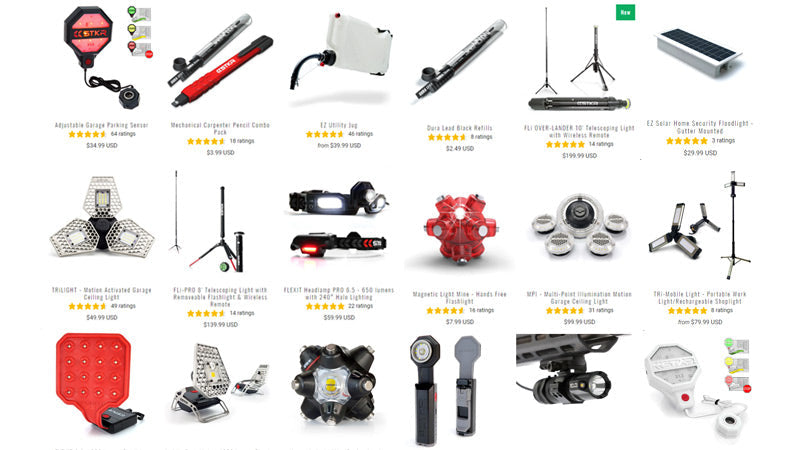
How To Transfer Hydraulic Fluid?
Share
Hydraulic fluid is an important component of many systems, be they engines that drive the transport industry or machines used in excavation, mining, farming, or manufacture. The fluid used in these systems needs to be within certain tolerances to ensure smooth operation. Transferring hydraulic fluid into and out of these systems while making sure not to contaminate the fluid can be challenging.
When transferring hydraulic fluid, your main concern will be to keep it free of contaminants. Use utility containers and jugs to transport the fluids to their final destination. Strain out all unwanted debris by pouring through filters before introducing hydraulic fluid into any system.
Hydraulic fluids for large-scale systems often come in large bulky containers, yet the systems they need to be put into have relatively small access points and openings through which you need to fill the system. The specific requirements for these fluids also mean that they cannot be stored in any type of container since some of these fluids can be corrosive or react with the material of the container.
Why Would You Need To Transfer Hydraulic Fluid?
As we have mentioned, sometimes the hydraulic fluid comes in large containers from the supplier, and you may only need small amounts at a time. The receptacle on hydraulic systems where you refill them are often small and inaccessible.
For this reason, you may need to decant hydraulic fluid into a different container to get it into the system of the machine you are working on.
You may also need to transport smaller quantities of the fluid to other parts of the workshop, or even a different location completely if your machinery is not near the storage area.
You may also need to tap hydraulic fluid out of a system that you need to repair and want to store the fluid for re-use in a suitable container.
You may even want to transfer hydraulic fluid from one system to another. Is it possible to achieve this and keep the systems uncontaminated?
Can Hydraulic Fluid Be Transferred Between Systems?
Hydraulic fluid can be transferred between systems as long as certain criteria are observed for the transfer and certain conditions for the transfer containers are met.
Hydraulic systems are machined to fine tolerances in order to attain airtight seals in the system to make use of the hydraulic pressure to do work. The introduction of contaminants to the system can result in a catastrophic breakdown of the hydraulic system or cause it to operate at a less optimum level.
These contaminants could be in the form of dust particles or the introduction of chemical contaminants that could contribute to the breakdown or failure of hydraulic seals and valves.
Thus, the transfer of fluid from one system to another needs to be done with care and with measures in place to protect the fluid from becoming contaminated.
The risk of contamination increases with the distance that the fluid needs to be transported between the systems, especially if the container is not protecting the contents adequately.
The container is only one part of the operation for the transfer; the other aspect is to have good filtration, both when you are extracting the fluid and when you are re-introducing the fluid back into the system or into a different system.
The sensitivity of hydraulic systems and by association their fluids make some systems not suitable for the transfer of hydraulic liquid from one system to another unless it is via a closed system. One industry sector where this is the case is aviation. Aircraft use many hydraulic systems to control the various systems in the plane.
Contamination in these systems could cost people their lives, so the transfer of hydraulic fluid from one system to another by tapping out of one and filling into another is not a safe practice due to the high-risk factor if the fluid becomes contaminated.
How To Transfer The Hydraulic Fluid
When removing the hydraulic fluid from a system, it is recommended that a fine microfilter be used to clean out any solid material from the hydraulic fluid before it goes into your transport container.
Depending on the sensitivity of the hydraulic system, you can just use this single filter process, or you can tap the fluid out of the system through a filter into a temporary, clean container and then pour it through a second, clean filter into the transport or storage container.
Once again, when the fluid is being poured back into a hydraulic system, it should be run through another clean microfilter to make sure no contaminants inadvertently enter the hydraulic system and cause problems to the smooth functioning of the system or the potential failure of the system.
The container that is used to transfer the hydraulic fluid is of paramount importance to maintain the integrity of the fluid until it is time to put it back into service in a hydraulic system.
What Container Can You Use For Hydraulic Fluid Transfer?
The container that is used to transfer the hydraulic fluid needs to meet certain sealing, safety, and usability protocols to be suitable for this function.
The plastic needs to be durable and resistant to deterioration by the hydraulic fluid. Effective seals need to be in place at all the openings of the container to protect the contents from contamination and to prevent the fluid from leaking out.
At STKR Concepts, we have developed a container that is ideal for the purpose of transporting hydraulic fluids, oil, and anti-freeze. While the container we have developed is great for this type of fluid transportation, it can just as easily be used to transport water, feed, and attractants for farming and other outdoor applications.
Our product that is ideal for this type of task is the EZ Utility Jug. We have custom-built this container to be rugged and durable for this kind of work.
Our EZ Utility Jugs have the following features that are ideal for hydraulic fluid transportation.
- Robust materials. The jugs are made from high-density, chemical-resistant polyethylene.
- Thick walls. The walls of the container are thick to prevent the containers from being easily punctured. Even though the walls are thick, they are still transparent to enable easy evaluation of the fluid level.
- Tough gaskets. All the gaskets used to seal the openings on the EZ Utility Jugs are chemical resistant, long-lasting, and also replaceable. These seals will prevent the contents from leaking out but also effectively prevent contaminants from entering the container from outside.
- Anodized aluminum breather. This breather allows you to easily control the speed of the flow of the contents out of the jug. Simply screw the breather out to increase the flow or close it down to limit the flow.
- Easy bend spout. The easy pour spout allows you to bend the spout to a more convenient pouring angle and then lock it in place at that angle. This reduces spillage while pouring and allows you to be more accurate in directing the spout into small openings. The spout also has a screw-on anodized aluminum cap with an o-ring to seal the contents from contamination or leakage.
- Secure transport. The EZ Utility Jugs can be ordered with an optional floor mount security bracket, which the jugs clip into to prevent them from falling over during transport. You can also secure the jugs in this mounting bracket with a padlock for additional security. This bracket can be secured to the bed of your truck or secured to the workshop floor.
We have developed these jugs in the standard STKR Concepts attention to detail. They have a 3-handle design to make carrying and pouring a breeze. They come in 3 gallons or 12-liter capacity and 5 gallons or 20-liter capacity, giving you versatility for your fluid transport needs.
Conclusion
Transferring hydraulic fluid is possible, but you need to have the right equipment to be able to transport the fluid safely and maintain the integrity of the contents. This means keeping contaminants out of the fluid and keeping the fluid from leaking out.
This can be a tricky process unless you have reliable equipment and containers to perform the task to the required safety standard.
Luckily, you have STKR Concepts looking out for you and coming up with innovative ideas to solve problems in your workshop and workplace and make life that little bit easier!




